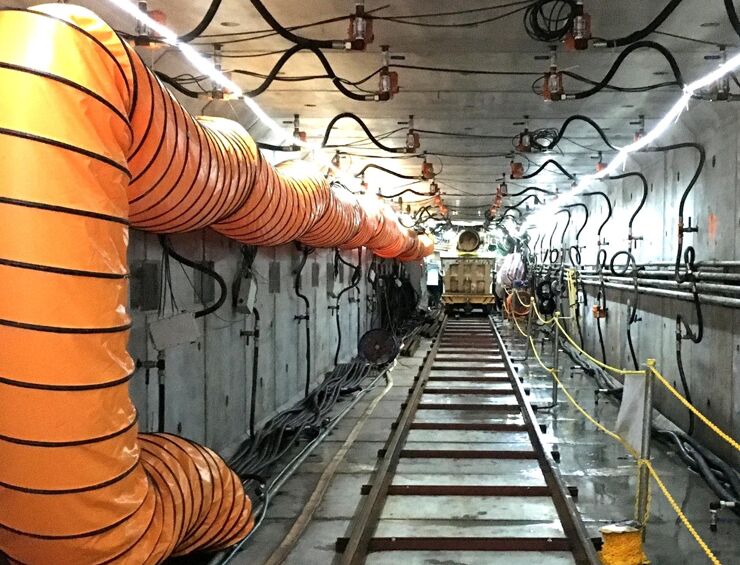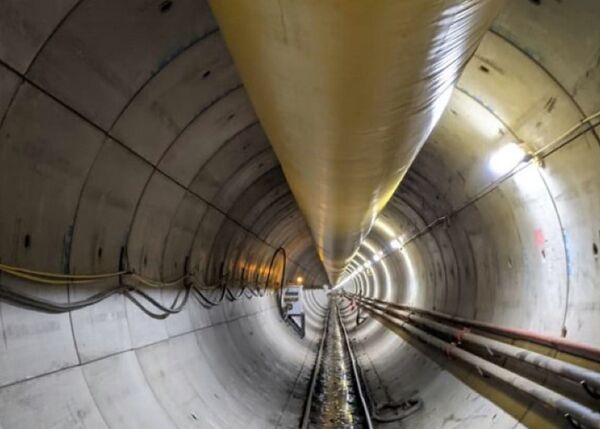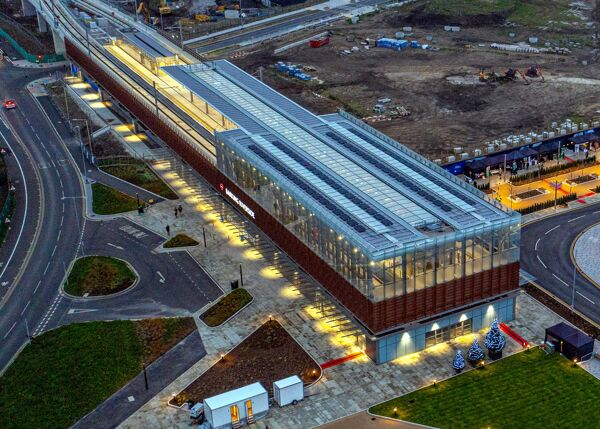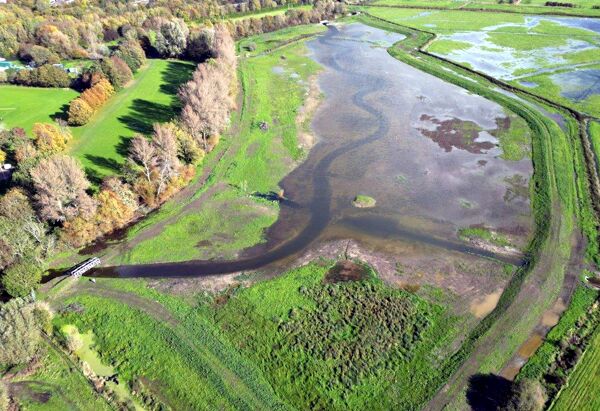
The Hong Kong government has used NEC to deliver a complex set of transport links – including roads, a footbridge and a pedestrian subway − at the northern end of the 320 ha Kai Tak development in Kowloon. The scheme was highly commended for the 2020 NEC Transport Project of the Year.
The Civil Engineering and Development Department (CEDD) let the work to a joint venture of Build King and Richwell Engineering joint venture in December 2016 under a HK$553 million (£58 million) NEC3 Engineering and Construction Contract (ECC) Option B (priced contract with bill of quantities). It is on course for completion on time and within the agreed budget.
The project has significantly improved vehicle and pedestrian links between the former Kai Tak airport site, which is being transformed into a vibrant and people-oriented community with sports facilities and public open spaces, and the adjacent San Po Kong and Choi Hung areas.
The scope included a 320 m long dual two-lane link road within the Kai Tak development, a 290m long elevated landscaped walkway across Prince Edward Road East to San Po Kong, and a 140m long pedestrian subway under Prince Edward Road East, Kwun Tong Bypass and Shing Kai Road to Choi Hung.
Also delivered under the contract were 650 m of slip roads, demolition of an existing flyover, road modification works, associated drainage, sewerage, water mains, landscaping, ancillary works and environmental mitigation measures.
Risk Reduction Meetings
According to the project manager Albert Chan, chief engineer at Division 5 of CEDD’s East Development Office, it was identified from the outset that one of the most high-risk elements of the contract was the subway tunnelling works linking the Kai Take development to Choi Hung.
‘In addition to running underneath several busy at-grade and elevated roads, the 140 m long, 5 m wide and 4 m high rectangular tunnel passed under a four-cell, 26 m wide by 3 m deep stormwater drainage culvert, a 1.8 m diameter trunk sewer, 1 m diameter freshwater main and a district cooling pipeline system. Other than one ventilation shaft, there was no room for intermediate working shafts, the groundwater table was above the tunnel crown and the overall tunnel had to be deeper than originally designed due to conflicts with some uncharted underground utilities’.
He says the project team held a series of risk reduction meetings to address the situation. ‘Embracing the NEC principle of acting in a “spirit of mutual trust and co-operation”, we identified the option of using an innovative mechanical non-man-entry tunnelling method using a rectangular tunnel boring machine (RTBM) rather than conventional manual trenchless excavation with temporary ground support. This significantly reduced tunnelling risk but at a considerably higher construction cost.’
Collaborative Approach
Chan says the project parties collaborated wholeheartedly to make the solution viable. ‘Appreciating that the innovative method would be a first for Hong Kong with significant benefits, potentially transforming construction of future subway and culvert works, we went the extra mile. In addition to formulating an NEC compensation event, to which CEDD swiftly gave approval and secured additional funds, we took an active lead in explaining the technology to the various authorities and assisting the contractor obtain the requisite consents.’
He says the contractor proactively procured early input of RTBM specialists to compile a method statement complete with essential details, and the supervisor Arup promptly deployed its tunnelling experts to verify the proposal’s feasibility. ‘To appreciate first-hand practical application of the technology, the project team arranged an overseas duty visit on RTBM projects under construction, joined by the authorities. The insights gained and experience shared greatly boosted their confidence in accepting this innovative technology.
‘The team’s collaboration extended further to strive for an optimal scheme. In particular, we successfully acquired a sizeable area nearby for manufacturing the 92 units of 1.5 m long precast concrete tunnel segments, greatly enhancing works logistics. Through the supervisor’s effective coordination, the team also secured a restricted access for RTBM delivery, avoiding the lengthy procedures required for transporting the oversized equipment via public roads.’
Overall, Chan says the successful switching from conventional to RTBM construction achieved over 60% time saving. ‘The RTBM innovation would not have materialised to resolve the acute risks in the subway tunnelling, as well as paving the way for its future use in Hong Kong, without the NEC-inspired trust and cooperation between the project parties. The outcome is a testimony of how project challenges can be satisfactorily turned into opportunities through the NEC framework and the collaborative spirit it nurtures.’
Benefits of Using NEC
- NEC obligation to work in a ‘sprit of mutual trust and co-operation’ enabled project challenges to be turned into opportunities for innovation.
- NEC early warning and risk management process identified an innovative technology for installing the subway tunnel, significantly de-risking the project and reducing construction time by 60%.
- NEC compensation event mechanism ensured the contractor was quickly and fairly compensated for the additional cost.
- NEC’s collaborative ethos ensured all parties worked together to ensure the innovative tunnelling system – a first for Hong Kong – was a success.



